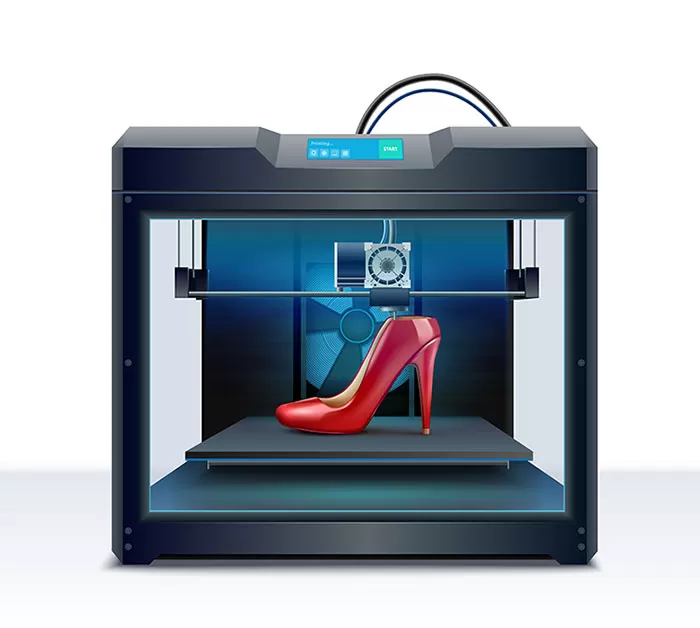Introduction: The Game-Changing Impact of 3D Printing on Fashion and Retail
3D printing is revolutionizing various industries, and fashion and retail are no exception. As a cutting-edge technology, 3D printing is driving innovation, enabling greater customization, and promoting sustainability in the world of fashion. In this article, we will explore the top 7 ways 3D printing is changing the future of fashion and retail.
1. Reducing Waste and Promoting Sustainability
One of the most significant ways 3D printing is transforming the fashion industry is by reducing waste and promoting eco-friendly practices. Traditional manufacturing methods often result in excessive material waste and require significant energy consumption. With 3D printing, designers can create products with minimal waste and a smaller carbon footprint. This approach not only reduces the environmental impact but also allows for more efficient use of resources. Moreover, 3D printing enables the use of recycled materials, further contributing to a circular economy within the fashion industry.
2. Enhancing Customization and Personalization
3D printing enables designers and retailers to offer a higher level of customization and personalization to their customers. This technology allows for the creation of unique products tailored to individual preferences and body measurements. As a result, customers can enjoy a more personalized shopping experience, leading to increased customer satisfaction and loyalty. From customized shoe soles to one-of-a-kind jewelry pieces, 3D printing offers endless possibilities for personalized fashion items.
3. Streamlining the Supply Chain
The fashion industry’s supply chain is known for its complexity, with numerous stages and players involved in the production process. 3D printing has the potential to streamline this supply chain by eliminating the need for some intermediaries, such as factories and distribution centers. This can result in reduced production times, lower costs, and a more agile response to market trends and consumer demands. With on-demand manufacturing, retailers can minimize inventory levels and associated costs, while still offering a wide range of products to their customers.
4. Democratizing Fashion Design and Production
3D printing technology is making fashion design and production more accessible to a wider audience. With the availability of affordable 3D printers and design software, aspiring designers and entrepreneurs can bring their ideas to life without the need for a large investment in traditional manufacturing equipment. This democratization of the fashion industry can lead to greater creativity, innovation, and diversity in the market. It also encourages collaboration between designers, engineers, and material scientists, fostering the development of new ideas and solutions.
5. Paving the Way for New Materials and Techniques
3D printing is not only changing the way fashion products are made but also the materials used in their production. Designers are experimenting with various materials, from recycled plastics to biodegradable filaments, to create sustainable and innovative products. Additionally, 3D printing enables the development of new techniques, such as intricate lattice structures and seamless garment construction, which can enhance the functionality and aesthetics of fashion items. These novel materials and techniques can lead to the creation of more comfortable, durable, and visually appealing products.
6. Accelerating the Adoption of Wearable Technology
The integration of technology into fashion has been an ongoing trend, and 3D printing is playing a crucial role in its acceleration. With the ability to create intricate designs and lightweight structures, 3D printing is an ideal solution for developing wearable technology products. From smart textiles with embedded sensors to 3D-printed electronic components, the combination of fashion and technology is becoming increasingly seamless. As a result, consumers can enjoy more functional and aesthetically pleasing wearable technology that complements their personal style.
7. Expanding the Scope of Fashion Education and Research
3D printing is also impacting fashion education and research, as academic institutions incorporate this technology into their curricula and research projects. Students and researchers can experiment with new materials, techniques, and design concepts, pushing the boundaries of fashion innovation. This exposure to cutting-edge technology and interdisciplinary collaboration prepares the next generation of fashion professionals to embrace the future of the industry.
Conclusion: Embracing the Future of Fashion and Retail with 3D Printing
The implementation of 3D printing in the fashion and retail industries is a game-changer, offering numerous benefits and opportunities for innovation. By embracing this technology, designers, retailers, and consumers can contribute to a more sustainable, customized, and accessible future of fashion. As 3D printing continues to advance, its impact on the fashion and retail industries will only grow, paving the way for exciting developments in the years to come. The integration of 3D printing in various aspects of the fashion industry, from design to supply chain management, signals a new era of innovation that has the potential to reshape the way we perceive and experience fashion.
